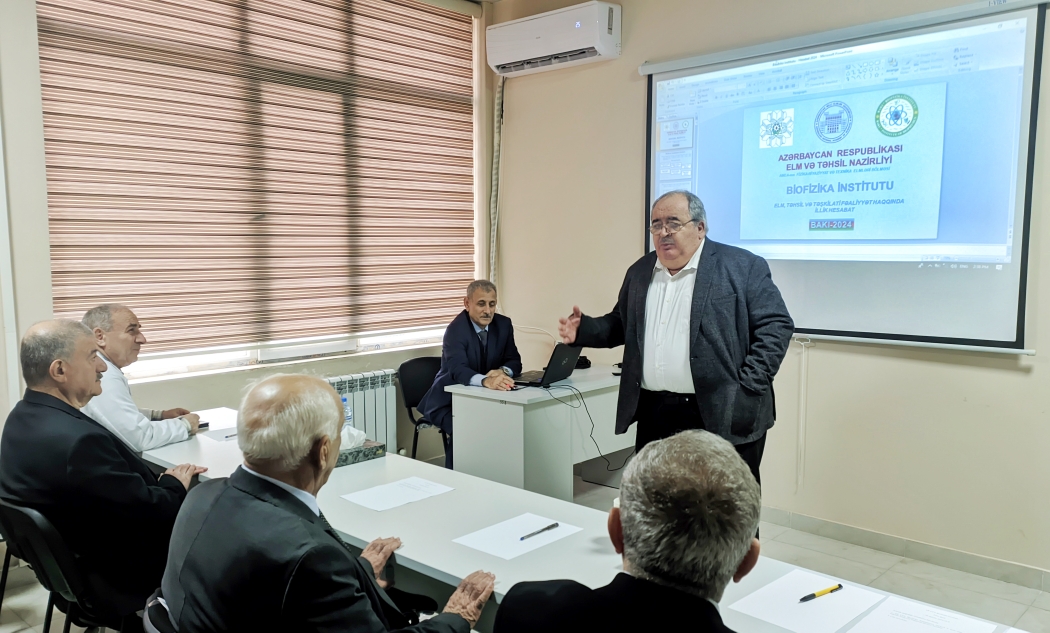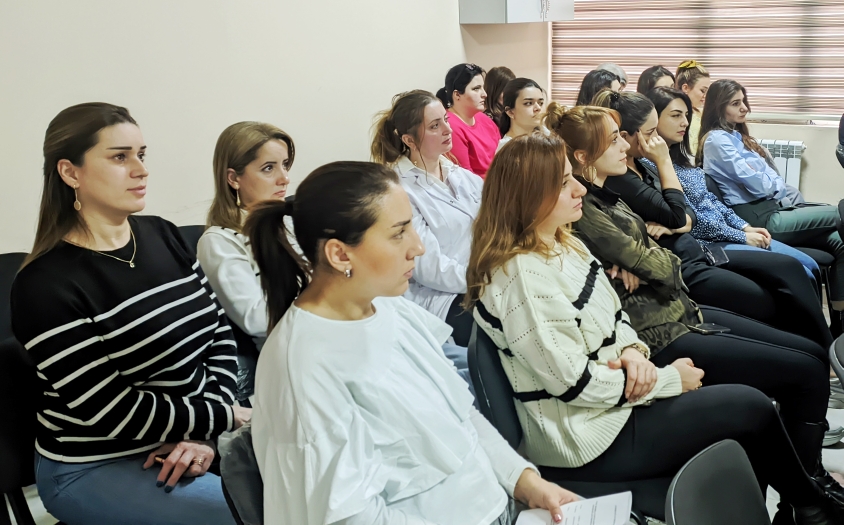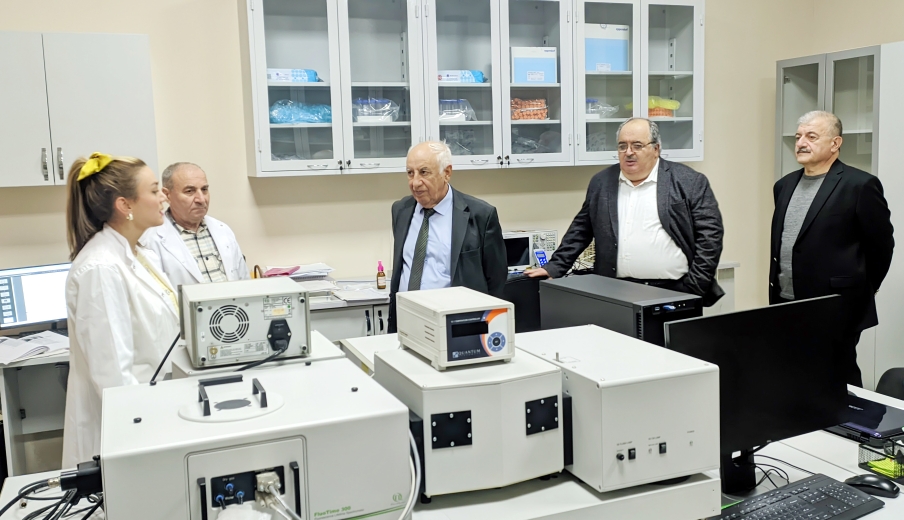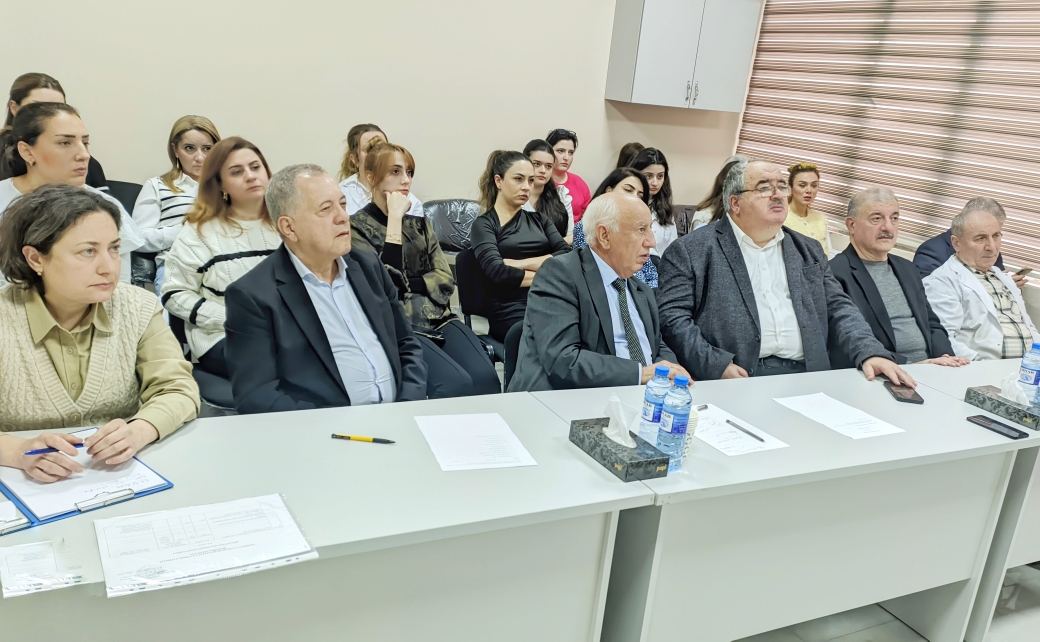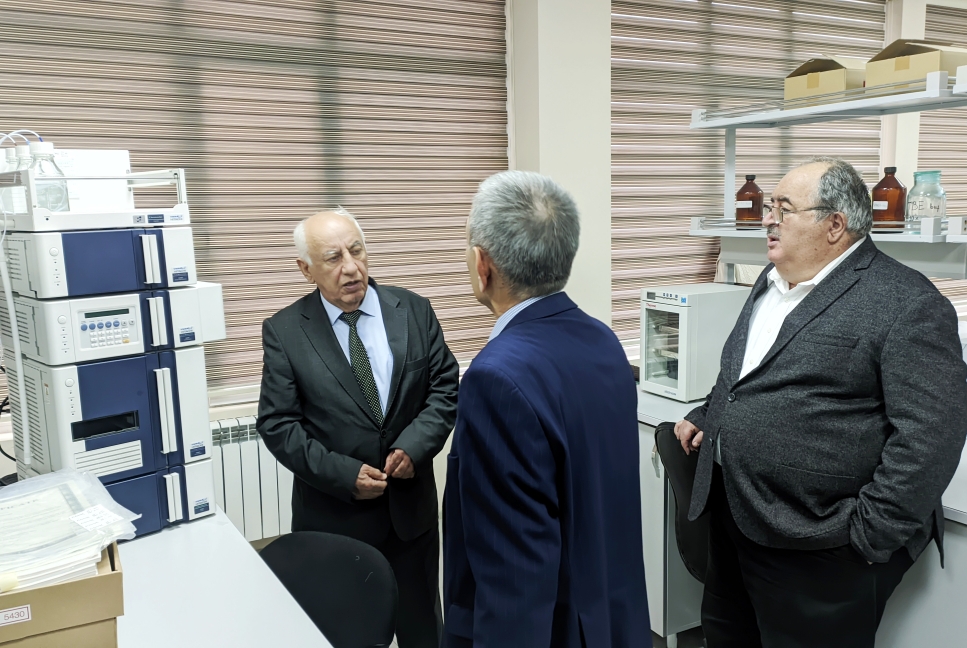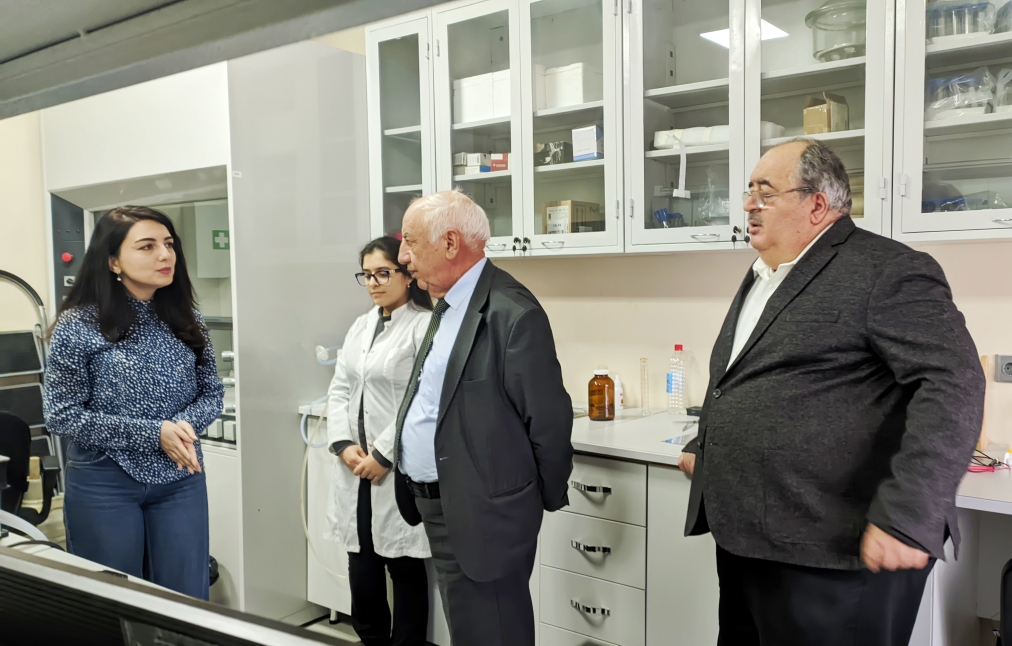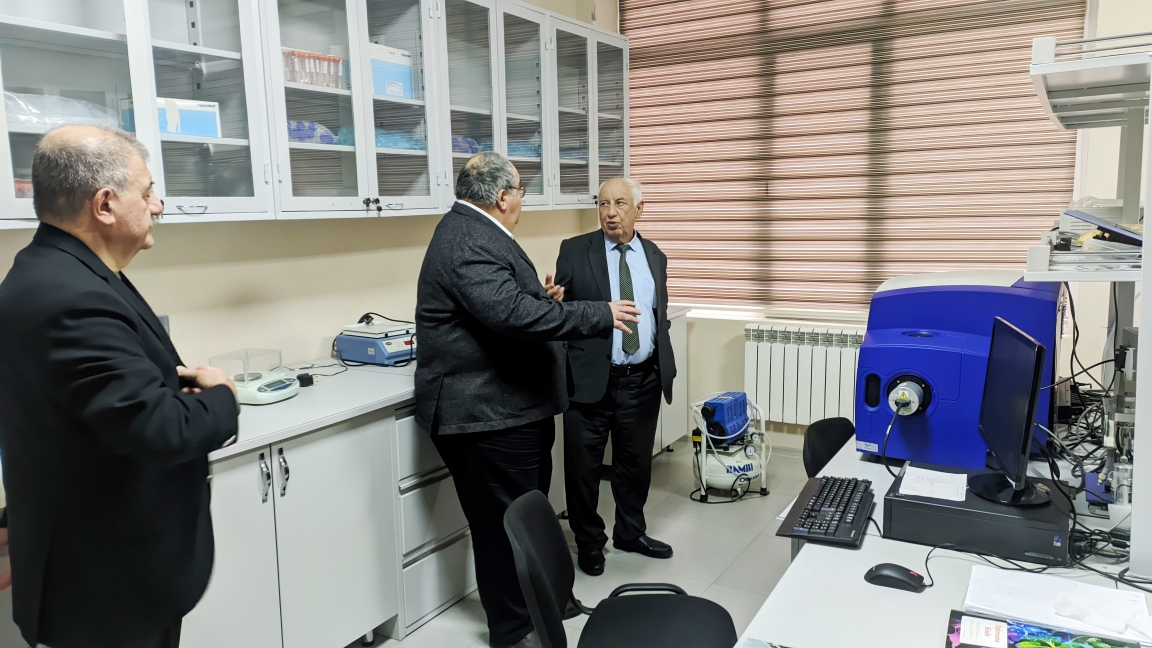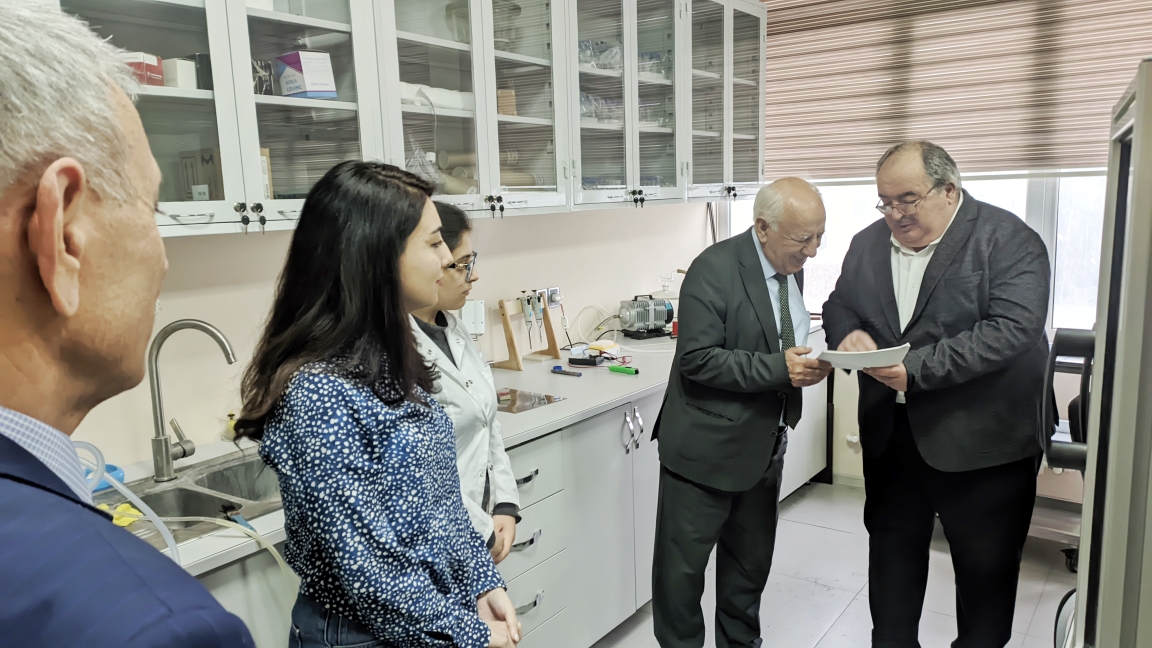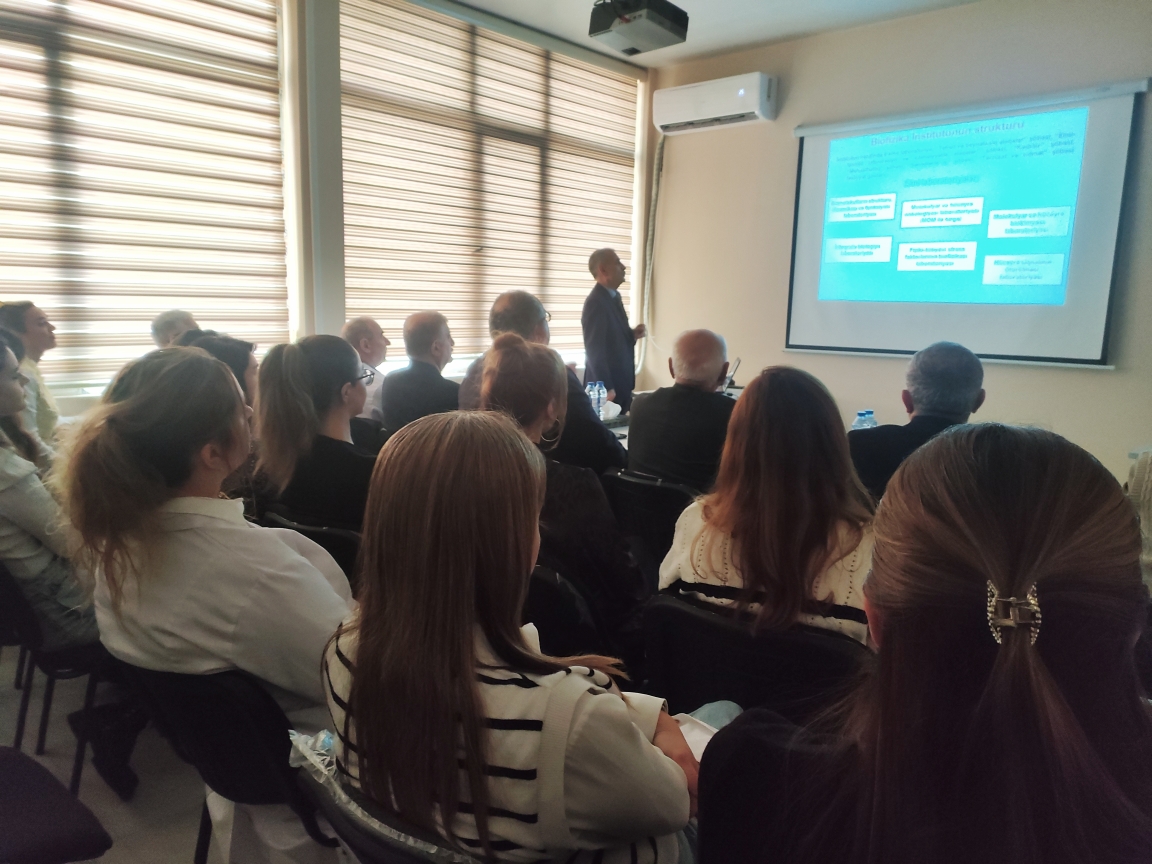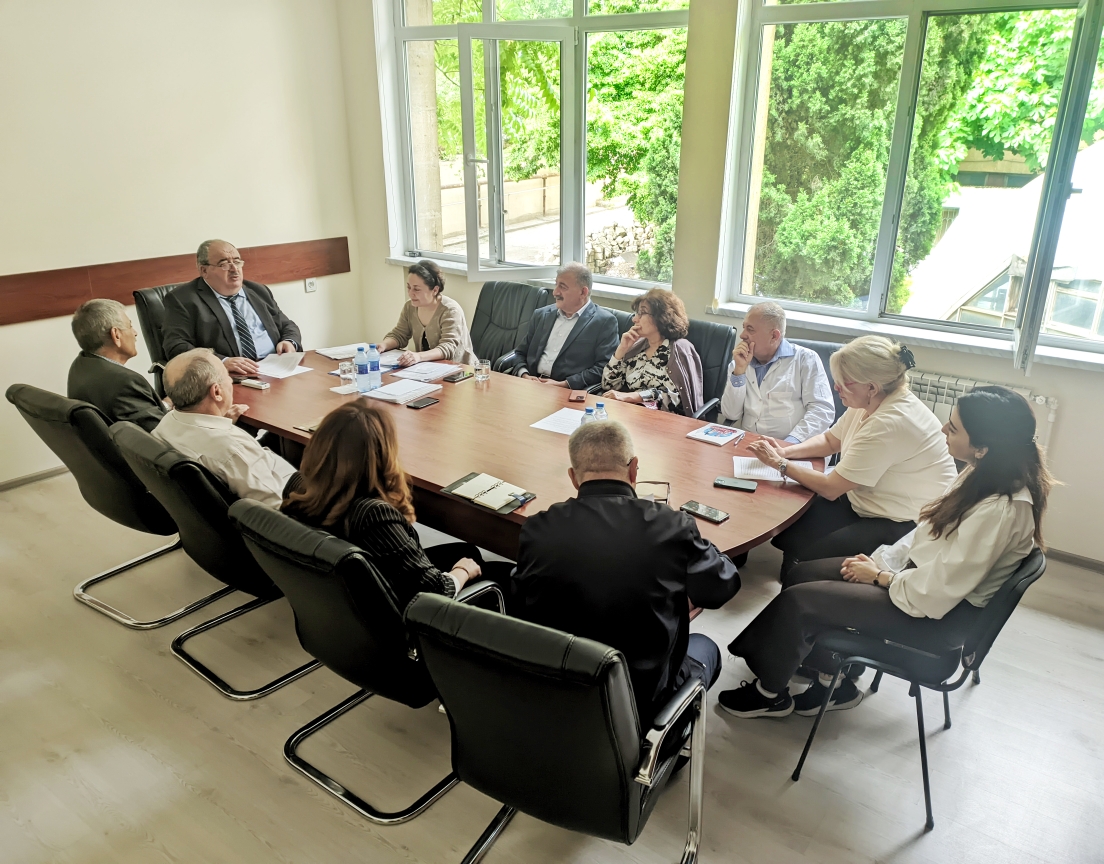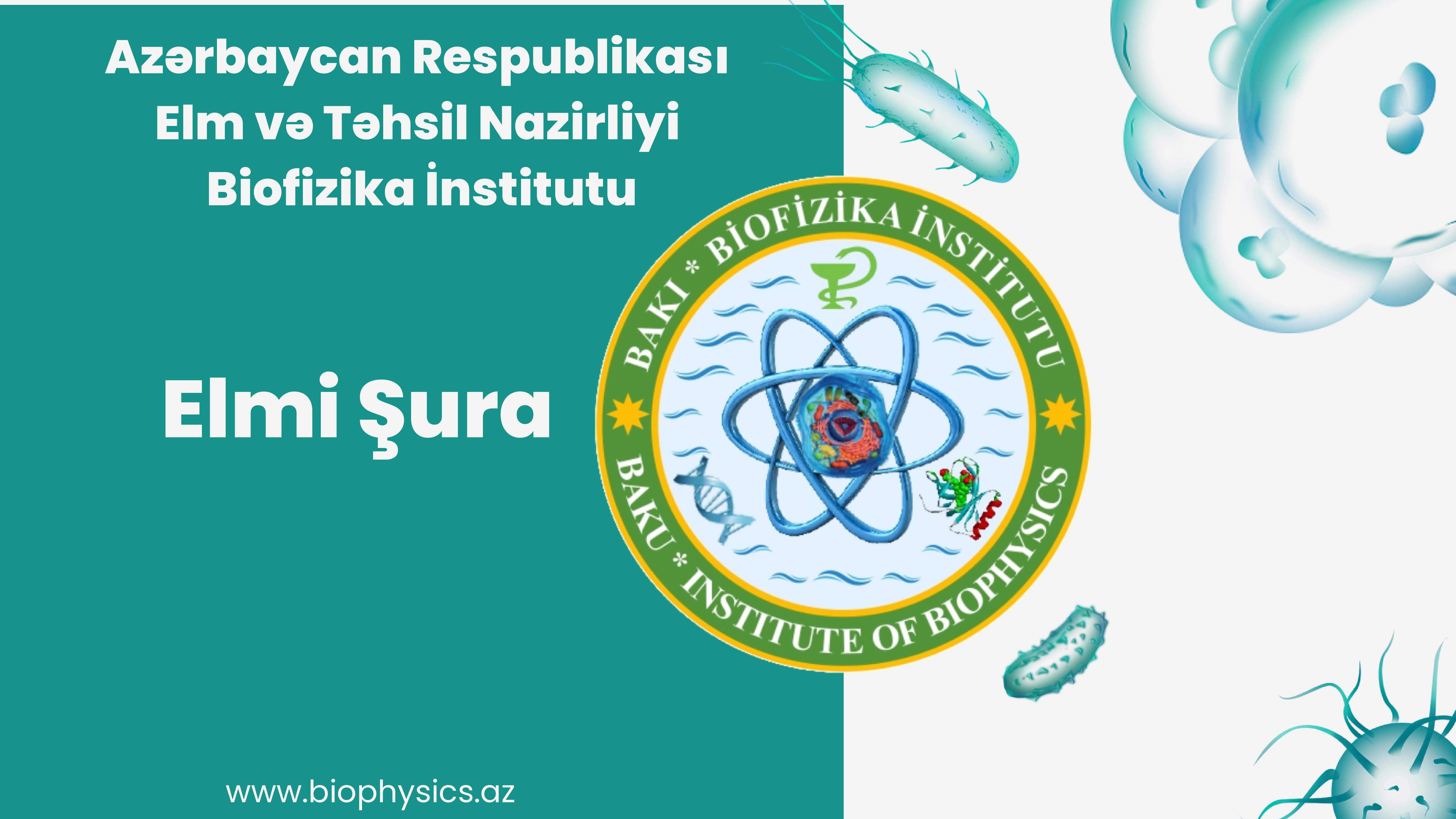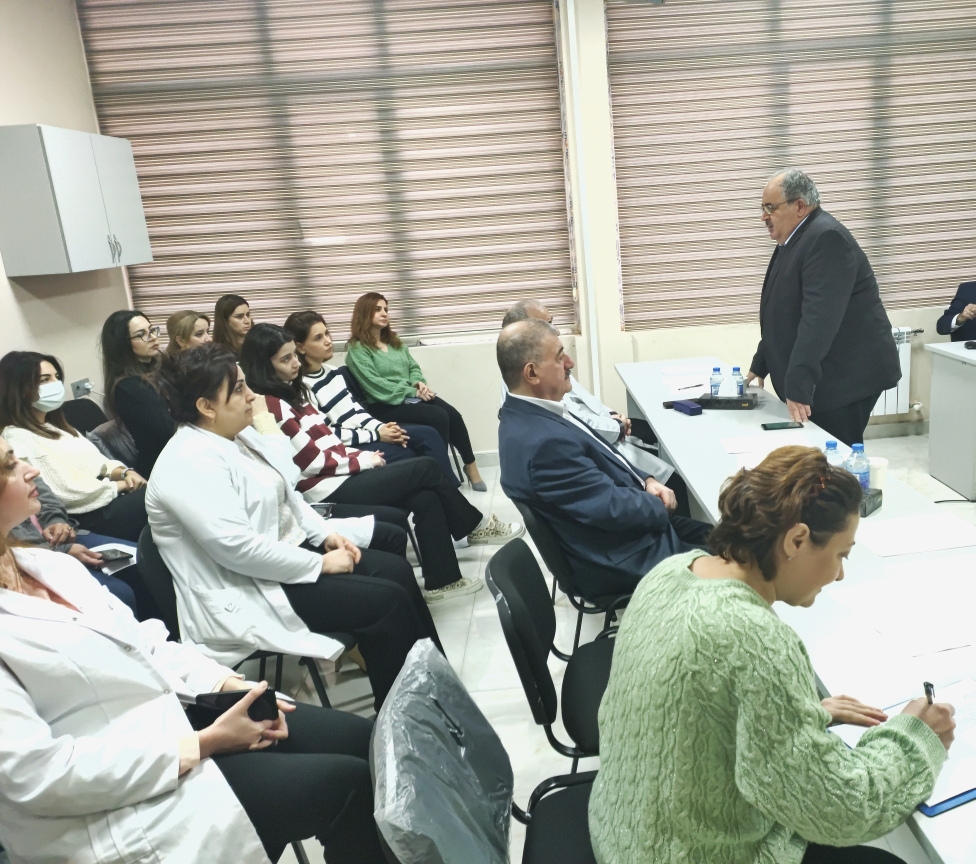A meeting of the Scientific Council of the Institute of Biophysics devoted to the annual report of the scientific institution was held
The 2024 Annual Report of the Institute of Biophysics was Presented
A meeting of the Scientific Council dedicated to the 2024 annual report was held at the Institute of Biophysics of the Ministry of Science and Education of the Republic of Azerbaijan. The event was attended by Professor Islam Mustafayev, Corresponding Member of ANAS and Director of the Radiation Problems Institute, as well as the leadership, members of the Scientific Council, and laboratory staff of the Institute of Biophysics.
The meeting was opened by the Director-General of the Institute of Biophysics, Corresponding Member of ANAS, Oktay Qasimov, who welcomed the participants and gave the floor to the Executive Director of the Institute, Doctor of Biological Sciences, Karim Qasimov, to present the report. Karim Qasimov detailed the measures implemented in connection with presidential decrees, Cabinet of Ministers decisions, and resolutions of the Ministry of Science and Education, as well as the scientific research directions, structure, human resources, and achievements of the Institute.
The research activities of the Institute focused on the topic “Physico-Chemical Fundamentals of Biological Systems.” Investigations covered six studies across two themes and seven stages related to the structure-dynamics-function relationships in biological systems. The scientific results were documented in accordance with international standards and presented in scientific publications.
In the “Molecular and Cellular Oncology” laboratory, the genetic characteristics of cervical and lung cancer were studied. For the first time in Azerbaijan, EGFR mutations in the blood of lung cancer patients were identified using liquid biopsy methods and confirmed by international studies. These efforts were carried out in collaboration with Portugal’s STAB VIDA company.
In the “Integrative Biology” laboratory, clinically significant mutations in tumor suppressor and oncogenes were examined, including a comparative analysis of mutant forms of the p53 protein. The “Molecular and Cellular Biochemistry” laboratory continued research on the cloning of large potassium channels and the production of recombinant proteins. In the “Biophysics of Physico-Chemical Stress Factors” laboratory, the effects of zinc salts on erythrocyte oxidation processes were studied, and the results were evaluated using various methods.
Significant progress was also made in integrating science and education. Undergraduate and graduate students from Baku State University conducted research and industrial internships at the Institute of Biophysics, participating in scientific projects. Additionally, through the “OneVolunteer” program, students attended training sessions led by young scientists of the Institute. Collaborative projects with school students within the framework of the “Scientists of Tomorrow” competition also yielded successful results.
Following the presentation of the reports, discussions were held, and the report was unanimously approved. Islam Mustafayev praised the activities of the Institute, highlighting its achievements as a significant success for a small team and noting that the Institute serves as a model for a new scientific structure. After the meeting, Islam Mustafayev visited the laboratories, reviewed modern equipment, and commended the Institute's staff for their precision and operational excellence. Oktay Qasimov emphasized the importance of technical accuracy in scientific research and expressed gratitude to those who contributed to the report.
Among the key scientific achievements of 2024 were several innovative research projects that contribute to advancements in modern medicine and biological sciences. For instance, new ultra-sensitive biosensors were developed for detecting the levels of Doxorubicin in biological fluids, aiding personalized medicine. These biosensors enable precise measurement of the concentration of cancer drugs like Doxorubicin in blood plasma, and the results were published in the journal ACS Applied Nano Materials.
Another significant study focused on lung cancer. For the first time, the Institute identified EGFR mutations in the peripheral blood of lung cancer patients using liquid biopsy methods. These findings can be used to monitor treatment effectiveness and detect drug resistance. This research was conducted in collaboration with Azerbaijan’s National Oncology Center and Portugal’s STAB VIDA company.
Additionally, the Institute worked on identifying hereditary risk groups for lung cancer and implementing preventive measures. These findings were accepted for publication in the journal of the American Association for Cancer Research. Studies on the functional groups of ErbB receptors revealed structural and functional similarities between EGFR and HER2 receptors, with this work set to be published in Biochemical Journal.
Research on ion channels also stood out, demonstrating the potential of the BK channel's C-terminal domain as a hemin sensor and highlighting its structural characteristics as targets for cancer treatment. Finally, the effects of zinc salts on erythrocytes in patients with cardiovascular pathologies were investigated, confirming higher sensitivity in such cases. These findings showcase cellular-level metabolic changes and pave the way for new approaches to cancer diagnosis.
These research activities reflect the positive outcomes achieved by the Institute of Biophysics in various fields of science and pave the way for the development of new treatment methods in medicine.

